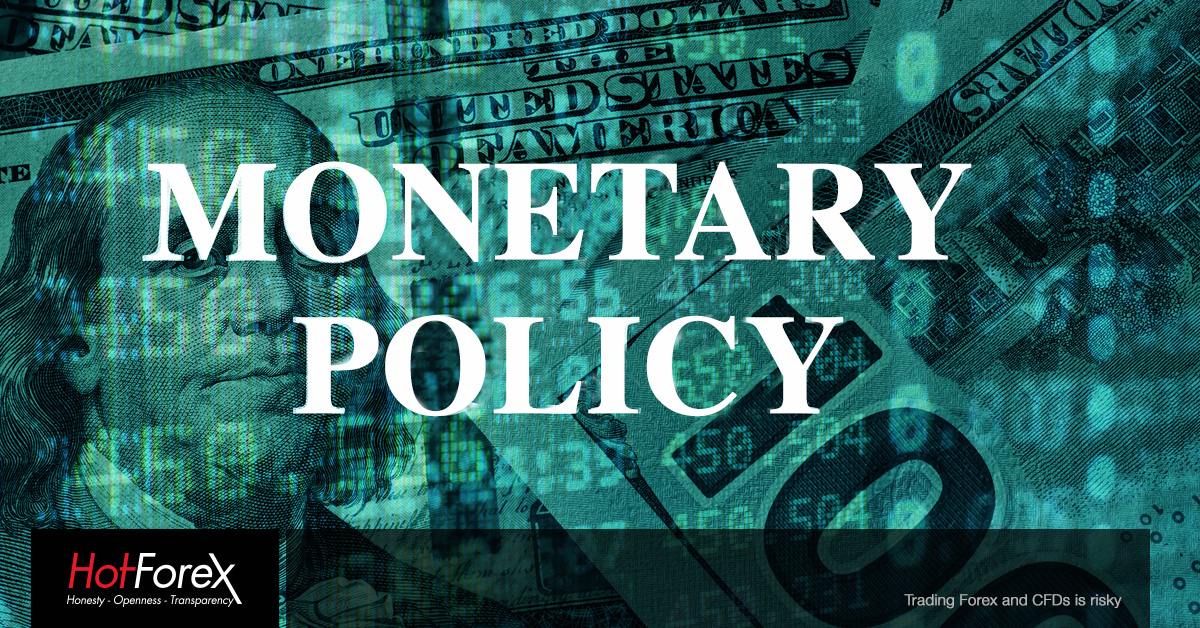In the last article, we saw which indicators Central Banks observe in order to determine whether they should change their policy rates. In this post, I shall offer more insights with regards to what has been named “unconventional” monetary policy, and how this is conducted. In the past, Central Banks were more secretive of the indicators they observe as well as their intentions regarding the future path of interest rates. As such, policy rate changes usually came as a surprise to the markets, both with regards to their magnitude as well as their timing. In recent times, Central Banks have opted for a different type of communication, i.e. they choose to hint the timing and extent of future monetary policy actions in order to make the markets discount the impact from rising interest rates in advance and, in theory, reduce the shock.
In practice the idea works as follows: the Central Bank makes a statement about its future monetary policy intentions, e.g. that interest rates will not be changed in the near future. Given that no monetary policy action is expected, banks are more likely to set their long-term interest rates at a lower level, given that they know that they can borrow funds from the Central Bank at low rates, which are not expected to increase in the future. As such, businesses can get cheaper loans and are in a better position to plan their future steps. By communicating their future plans, Central Banks allow businesses and people to better prepare themselves for the future and make longer-term investments easier to assess.
For example, ECB’s Governing Council said that it expected interest rates to remain “at present or lower levels for an extended period of time“. The exact specification of ECB forward guidance has been adapted on many occasions, including its intentions with regards to the horizon of its asset purchase programme. Naturally, the whole success of forward guidance lies on the Central Bank’s credibility. Consequently, the content of any forward guidance regarding policy intentions must always be consistent with the assessment of the current economic situation and the outlook for the future, in particular for inflation. Further to this, the Central Bank should also abide its own agenda, as in the case of the recent US rate hikes.
Forward guidance does not only include the Central Bank’s attitude with regards to interest rate changes but also about its plans regarding its asset purchase programme (otherwise known as Quantitative Easing – QE). The asset purchase programme is another form of unconventional monetary policy, which aims at injecting liquidity into the financial system via exchanging government, or at times corporate, bonds with cash generated by the Central Bank. The transmission channel in this case has to be similar, i.e. this will pass through the financial sector: owners of bonds are usually banks and other investment funds which receive cash in exchange for their bond holdings. The private sector is left with more cash and less bonds and is, as a result, more liquid. This added liquidity is expected to be channelled into the economy in the form of productive investments, i.e. banks are expected to increase their lending while investment funds are expected to invest their liquidity in investments such as the stock market or other, perhaps riskier ones, such as start-ups etc. Through this expansion in liquidity, the economy is expected to grow faster.
To sum up, this part has shown what unconventional monetary policy is and how it aims to overcome the limitations of conventional monetary policy. To this end, it employs other instruments, such as guidance to the potential actions regarding interest rate changes and asset purchases to achieve its target. In the final part of this article series, I will elaborate on how conventional and unconventional monetary policy affect exchange rates. Stay tuned!
Click here to access the HotForex Economic calendar.
Want to learn to trade and analyse the markets? Join our webinars and get analysis and trading ideas combined with better understanding on how markets work. Click HERE to register for FREE! The next webinar will start in:
[ujicountdown id=”Next Webinar” expire=”2018/10/03 15:00″ hide=”true” url=”” subscr=”” recurring=”” rectype=”second” repeats=””]
Dr Nektarios Michail
Market Analyst
HotForex
Disclaimer: This material is provided as a general marketing communication for information purposes only and does not constitute an independent investment research. Nothing in this communication contains, or should be considered as containing, an investment advice or an investment recommendation or a solicitation for the purpose of buying or selling of any financial instrument. All information provided is gathered from reputable sources and any information containing an indication of past performance is not a guarantee or reliable indicator of future performance. Users acknowledge that any investment in FX and CFDs products is characterized by a certain degree of uncertainty and that any investment of this nature involves a high level of risk for which the users are solely responsible and liable. We assume no liability for any loss arising from any investment made based on the information provided in this communication. This communication must not be reproduced or further distributed without our prior written permission.



















